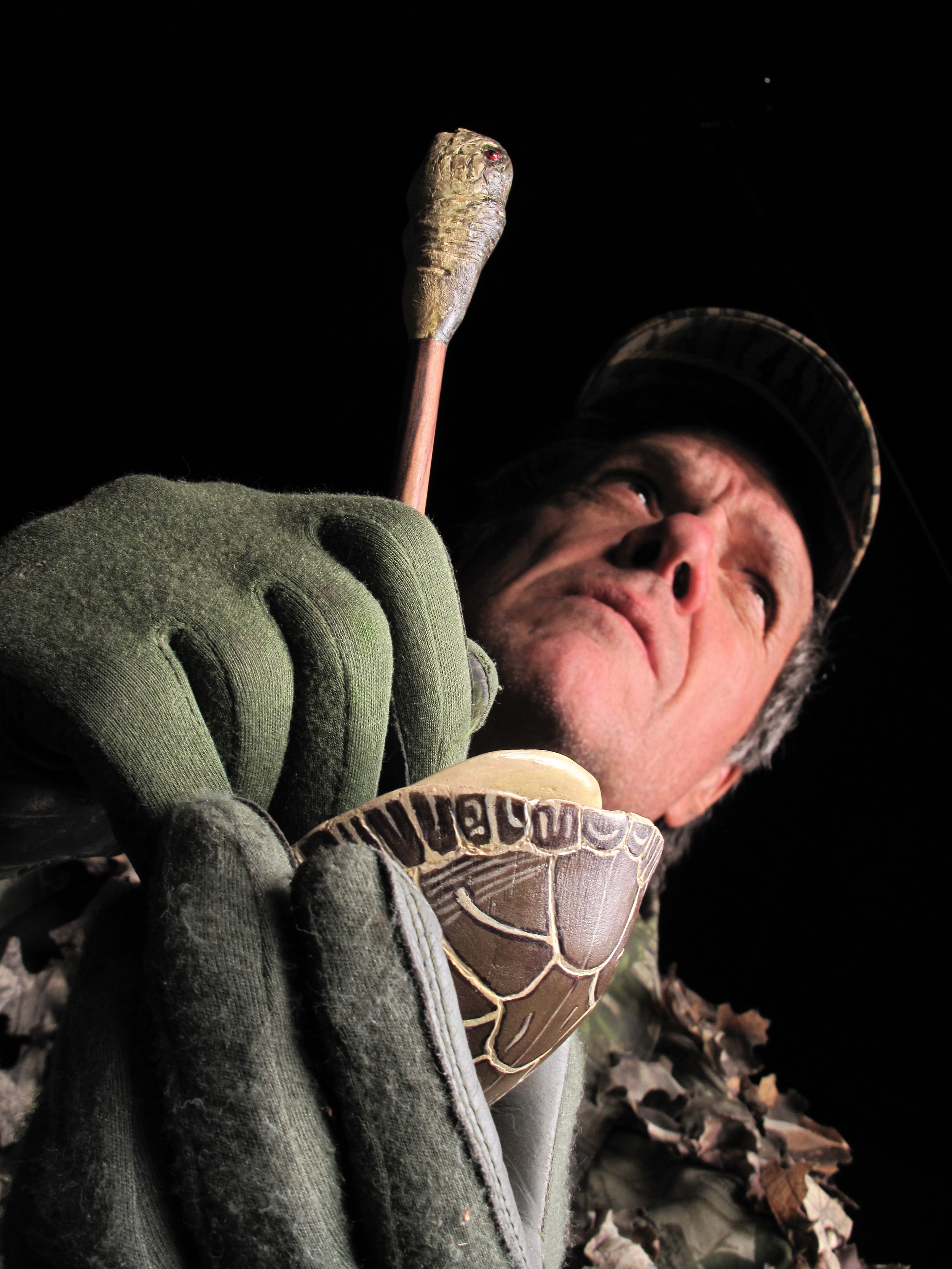Steve Stortz—A Hunter Who Walks the Walk
Way I see it, some outdoors guys talk the talk. Steve Stortz walks the walk. As outdoor pursuits go, Stortz does it all. He knows fly fishing, fly tying, wing shooting, varmints, whitetails, hares, elk, coons, birds, archery, handguns, long guns, fly rods, duck boats, canoes, snowshoes, decoy carving, mountaineering, bird dogs, and crafting muzzleloaders. Whatever.
Stortz has been carving duck and goose decoys out of wood since he was 16 years old, when he didn't have money for store-bought. He began selling them initially as working decoys for hunting, and lately has been carving them more for mantle pieces, since nobody can afford to throw expensive wood-block, hand-made decoys over the sides of their duck boats when plastic decoys are so cheap. Stortz still prefers to chuck his creations over the side—dings, dents, and all.
"Aw, they're easy to fix, ya know," he says in his native Kansas drawl.
Stortz muses over his turtle call design. "It's actually a proven design, and the turtle shape is my interpretation of that type of call. I find the turtle shapes interesting. Every one of these is an individual—shell-wise, paint-wise, style-wise. There's nothing worse than working on something you don't like, but I love making these things. Every one is an original work. The call sound is unsurpassed, the turtle shell lends itself to one of the best sound chambers I've ever come up with, so it's functional. I could carve these things the rest of my life and never get tired of 'em. Each is individually enjoyable. They're getting numbered from number one with the year I carve 'em," he grins.
Strikers are made topped with a basswood turtles' head, and the shafts are made from all kinds of wood. He even made a couple from buckthorn, taking what he calls a piece of environmental junk and turning it into something useful. Each style of wood—African woods like Kingwood, South American wood like Jatoba, and North American native species of ash and walnut or maple—give the calls a unique sound. (Hickory is the standard material used for strikers.)
"You never know how they're going to sound till you get them made', Stortz says. "Then I sand on the slate to tune them up. Depending on where you strike on the slate, I've had as many as four different hens' sounds come from the same call. I make sure that every call has a pencil-marked "sweet spot" where the sound is best. Turkey hunters, of course, will fiddle with 'em to try to find their own place."
"I'm sure some people will pick' em up to collect them, but I make 'em to use," Stortz says. "I've called in 24 turkeys to the call in Kansas, Nebraska, and Minnesota during first year we tried 'em."
Tom turkeys like those little turtles.
Mitch Kezar
Prize-winning photography and outdoorsman


